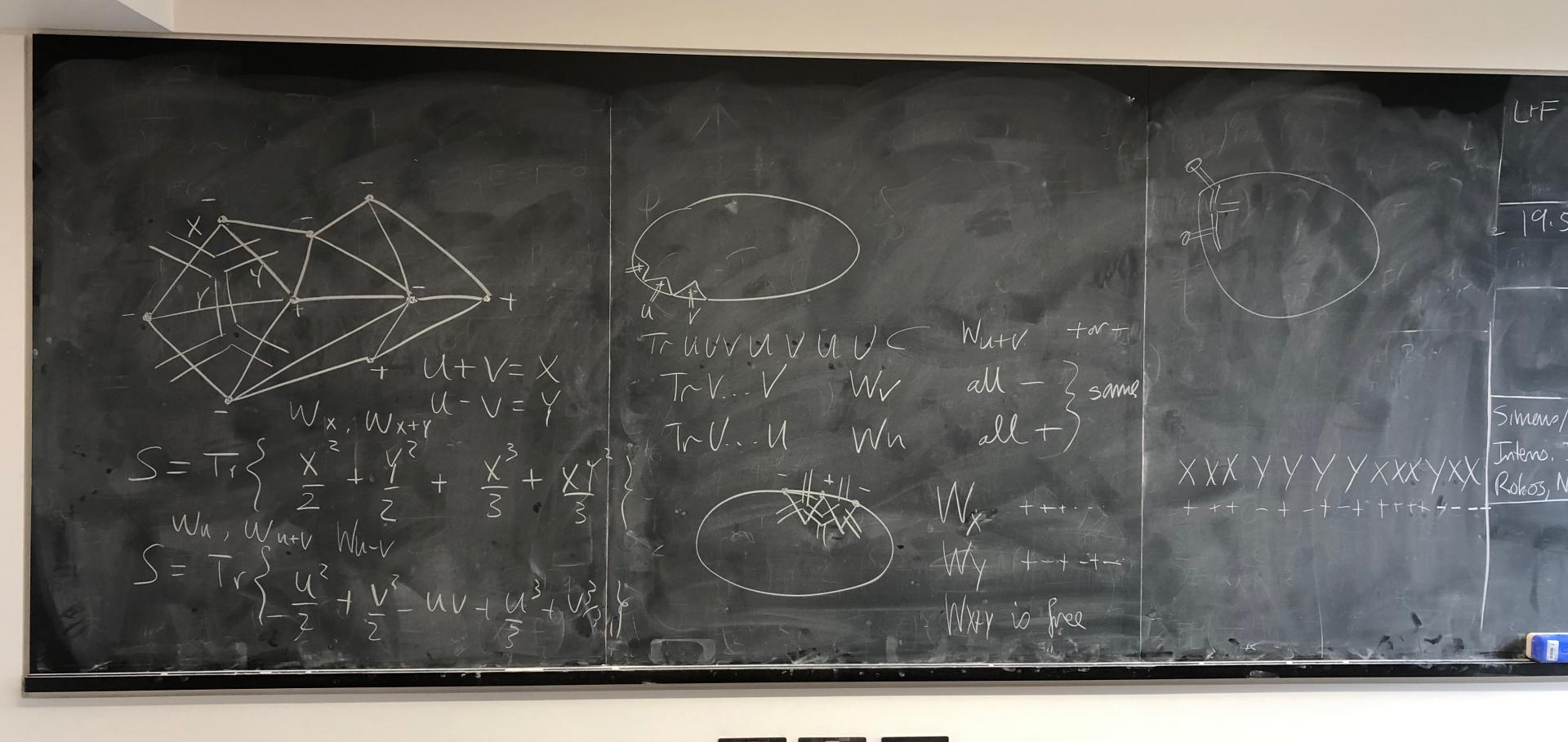D-Brane Recoil and Logarithmic Operators
ArXiv hep-th/9606102 (1996)
Abstract:
We construct the pair of logarithmic operators associated with the recoil of a $D$-brane. This construction establishes a connection between a translation in time and a world-sheet rescaling. The problem of measuring the centre of mass coordinate of the $D$-brane is considered and the relation between the string uncertainty principle and the logarithmic operators is discussed.High-Temperature Properties of the Z(3) Interface in (2+1)-D SU(3) Gauge Theory
ArXiv hep-lat/9605040 (1996)
Abstract:
We study the high-temperature properties of the Z(3) interface which forms between the various ordered phases of pure SU(3) gauge theory above a critical temperature. On a (2+1)-D Euclidean lattice, we perform an accurate measurement of the interface tension, which shows good agreement with the prediction of perturbation theory. We also examine the behaviour of the Debye electric screening mass, and compare this with theoretical predictions.High-Temperature Properties of the Z(3) Interface in (2+1)-D SU(3) Gauge Theory
(1996)
Properties of the Z(3) interface in (2+1)-D SU(3) gauge theory
NUCL PHYS B (1996) 535-538


